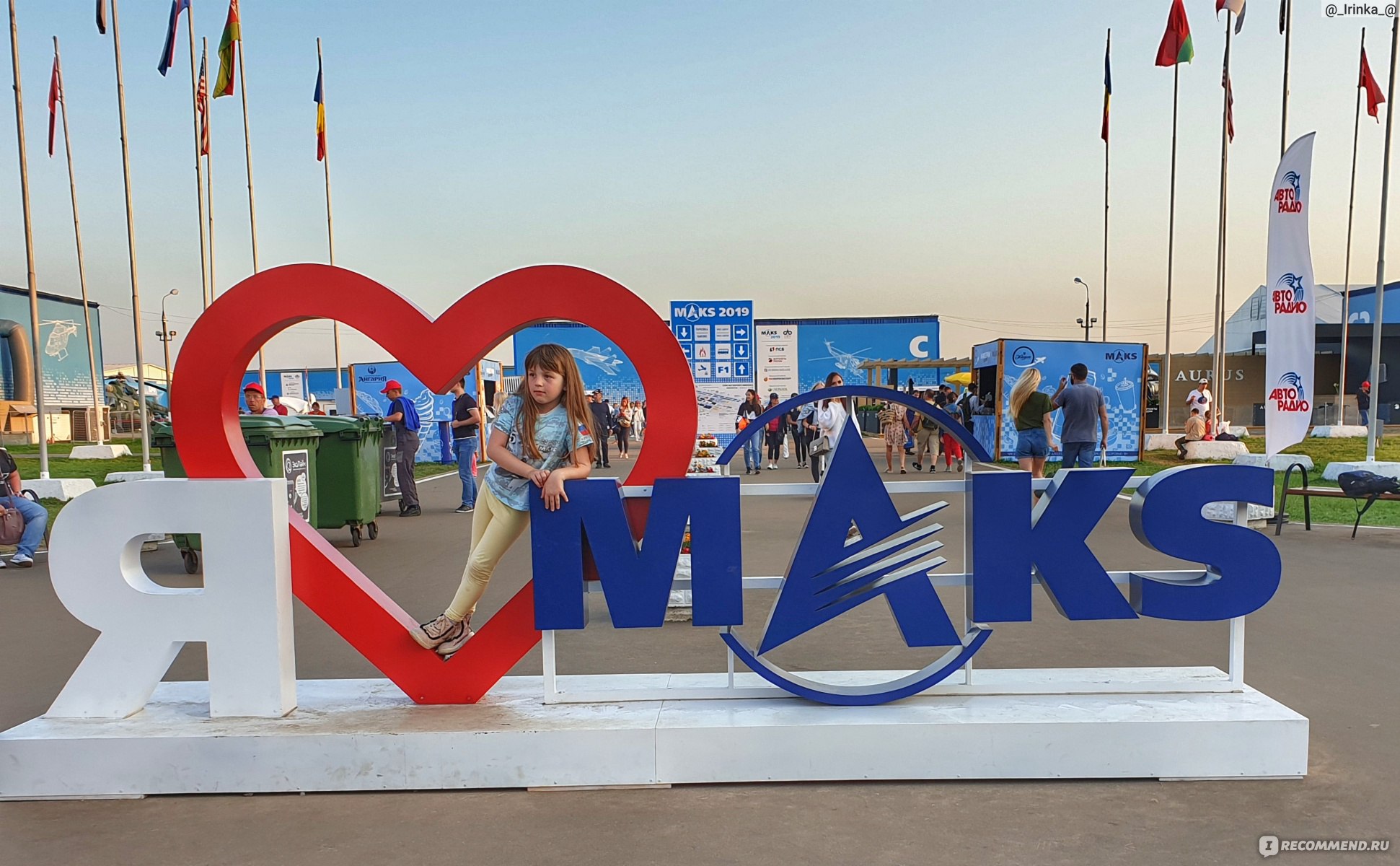
MAKS 2019, however, in Zhukovsky
A prototype of the Su-50 T-4-57 aircraft in a demonstration flight. Photo by Miroslav Vasilevsky.
Two years ago, it was almost officially announced that the Russian aerospace show MAKS would be held for the last time at a major airport in Zhukovsky. The arguments of the officials were simple - since the Patriot park was built in Kubinka and since there is an airport, then not only the aerospace show, but also the collections of the Central Air Force Museum of the Air Force should be moved there. RF in Monino. No one thought that the Patriot Park and the airport in Kubinka were 25 km apart and poorly connected to each other. Exhibition space at the airport in Kubinka is small - two hangars, even the platform is small compared to Zhukovsky. Reason won again (finally?) And this year the Moscow Aviation and Space Salon was held from August 27 to September 1 at the old location.
Officials, and probably high-ranking ones, did not stop their intrigues and ordered that, since MAKS is an aerospace salon, novelties from any other subject should not be presented there. No one noticed that at such foreign events (Le Bourget, Farnborough, ILA ...) radar equipment, anti-aircraft weapons or, in a broad sense, missile weapons are also presented. Until now, this has been the case in Zhukovsky, and the almost complete absence of exhibits of the anti-aircraft missile industry this year unpleasantly surprised not only professional guests, but also ordinary spectators. We can only hope that in two years this absurd decision will be changed and the situation will return to normal.
In addition, Russian aviation was not able to show many new products (why - more on that below), the participation of foreign exhibitors in MAKS has always been symbolic, and this year is even more limited (more on that below) .
Russian aviation companies are now paying a high price for a quarter of a century of steady cuts in research and development spending. Problems with proper financing of increasingly expensive and advanced programs began at the end of the existence of the USSR. Mikhail Gorbachev tried to save the "collapsing" economy, including by cutting military spending. In the days of Boris Yeltsin, the authorities were not interested in anything, but many projects were carried out on an “impulse” for several more years. There was also a huge "rump", that is, the resources of ideas, research, and often ready-made prototypes that were created in the USSR, but were not disclosed then for obvious reasons. Therefore, even in the early 1990s, the Russian aviation and rocket industry could boast of interesting "novelties" with virtually no investment. However, since there was no centralized funding for new programs after 20, only those companies that implemented large export contracts were able to maintain development and implementation potential. In practice, these were the Sukhodzha company and the Mila helicopter manufacturers. The companies of Ilyushin, Tupolev and Yakovlev practically ceased their activities. The most talented engineers and technicians left the design bureaus and pilot plants, and cooperation ties were cut off. Over time, a catastrophe occurred - the continuity of the functioning of construction offices, which in Russia are often called "construction school", was broken. Young engineers had no one to study and experiment with, because specific projects were not implemented. At first it was imperceptible, but when the government of Vladimir Putin began to slowly increase spending on scientific projects, it turned out that these companies had in practice lost their ability to be creative. In addition, the world did not stand still and it was impossible to simply return to projects "frozen" for XNUMX years earlier. The consequences of this are becoming more and more visible (more on this below).
Su-57 lands with parachutes in the air. Photo by Marina Lystseva.
Aircraft
In the hands of Sukhoi Aviation Holding Company PJSC, a strong card is the only Russian combat aircraft of the 5th generation, that is, the PAK FA, or the T-50, or the Su-57. His participation in the cabins of airlines is "metered" very carefully. Tue 2011 two cars flew over Zhukovsky, two years later they presented cautious maneuvers, etc. etc. This year, it was finally decided to present the aircraft on the ground as well. For this, KNS was appointed - the Integrated Natural Stand, that is, a non-flying copy used to integrate components. For this, the glider was painted and a fictitious number 057 was assigned to it ... A large delegation from Turkey, headed by President Recep Tayyip Erdogan, who was shown "057", was present at the opening of the salon. The media commented extensively on his questions about the possibility of acquiring the Su-57. There is no doubt that this is part of Turkey's complex game with the US, Russia and its Arab neighbors. Since the Americans do not want to sell the F-35 to Turkey, for which Ankara has already paid almost $200 million (the de facto cost of one F-35…), Erdogan “threatens” with the purchase of Russian aircraft, although so far only the Su-30 and Su-35. On the other hand, another potential user of the Su-57, India, has a different attitude. Initially, this aircraft was to be developed jointly with Russia, then they were considered the first obvious foreign user. Meanwhile, the situation has changed dramatically in recent years. India has trouble repaying loans previously taken from Russia and is using new credit lines guaranteed by the US government, buying American weapons, of course. Indian politicians also raise well-founded objections to the Su-57. Namely, they claim that the "first stage of the program" engines currently in use do not provide adequate performance. Russian designers also know about this, but the problem is that there are no suitable engines in Russia yet and will not be for a long time! All over the world it is normal practice to develop next generation aircraft engines. Work on them usually begins earlier than on the aircraft themselves, so they are often "late" and you have to temporarily use older propulsion systems so as not to stop the entire program. Therefore, for example. the first Soviet T-10s (Su-27s) flew with AL-21 engines, and not the AL-31 developed for them. The izdielije 57 engine is being developed for the Su-30, but the problem is that work on it began long before the design of the aircraft began. Therefore, prototypes of the T-50 were equipped with engines of the AL-31 family, which for marketing purposes were called AL-41F1 (“product 117”). Moreover, the airframe was designed taking into account the dimensions and instrumentation of old engines. It is officially said that the designers of the "Product 30" will have to "fit" into the dimensions and mass characteristics of the previous generation engine, and this is a limitation that is difficult to agree with. If a new engine is to be truly new, it cannot be the same (even in appearance) as an engine designed 50 years ago. So, when the new engine is ready, a lot will also have to be changed in the design of the airframe (considering that the prototype ed. 30 is being tested on the T-50-2, the amount of necessary changes in the design of the airframe is limited). It is noteworthy that Russian military politicians are aware of this weakness of the currently tested T-50, and therefore, until recently, they postponed the decision to order the first batch of aircraft. This year, at the Army-2019 forum (and not at MAKS!) Russian aviation ordered 76 vehicles in the “transitional” version, i.e. with AL-41F1 engines. This is certainly the right decision, which will allow launching a production line at factories in Komsomolsk-on-Amur, will give cooperators the opportunity to refine their equipment and facilitate foreign marketing. Otherwise, the entire program would have to be suspended for the next few years, and then, as some experts say, to start designing a new aircraft, because the T-50 will at least morally age during this time.
A minor curiosity associated with the demonstration of four T-50s in flight was the landing of one of the machines with the release of braking parachutes a few meters above the runway. Such a procedure makes it possible to significantly reduce the roll-out distance, but also heavily loads the airframe, since, firstly, sharp aerodynamic braking begins at a much higher speed, and secondly, the aircraft decreases significantly, i.e. gear has to withstand a much stronger impact on the runway. A highly skilled pilot is also required. This is supposed to be a desperate decision when, for example, a car has to land on a short section of a runway, the rest of which has been destroyed by enemy bombs. Many years ago, the best pilots of the MiG-21 and Su-22 landed in Poland ...
The surprise was that the only experimental Su-47 Bierkut machine got into static. This is one of the many interesting buildings from the period of the decline of the USSR. At that time, Sukhoi designers were looking for an aerodynamic design that would provide maximum maneuverability and high maximum speed. The choice fell on the wings with a negative slope. Numerous Su-27 units and MiG-a-31 engines were used to speed up the construction of the prototype... However, it was not a technology demonstrator, but a fully equipped fighter with reduced visibility (with meandering air intakes, a suspended armament chamber, a built-in cannon, Su-27M... ). The plane “flied well”, and if it weren’t for the Yeltsin Troubles, it would have had a chance to go into the series. Recently, the machine was used to test lock-launchers under the Su-57 program.
JSC RAC "MiG" is in a much worse, almost hopeless situation. There are not enough orders not only from abroad, but primarily from the Russian Ministry of Defense. Mikoyan did not receive an order to "intervene" in relation to his aircraft. The largest contract in recent times is 46 MiG-29M and 6-8 MiG-29M2 aircraft for Egypt (contract from 2014), but the country is famous for avoiding its financial obligations, and after a possible deterioration in relations between President Abd al-Fattah and As - Sisi with the Saudi court, the chances of Russia, and therefore Mikoyan, for Egypt to quickly repay its weapons loans may be rather meager. Hopes to sell another batch of MiG-29Ks to India are also illusory. During the show, it was unofficially mentioned that Algeria was seriously interested in purchasing 16 MiG-29M / M2, but then, also unofficially, it was clarified that the negotiations were really advanced, but related to 16 ... Su-30MKI.

